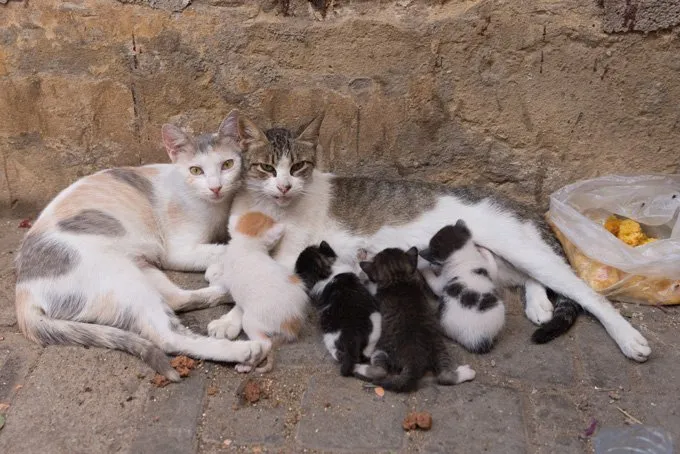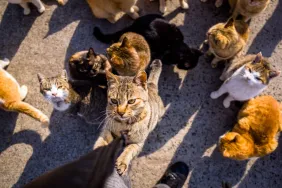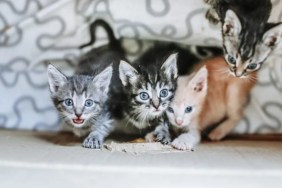Los Angeles has a serious feral cat issue. The city has at least three million feral cats roaming around. To help with the cat problem, an army of people now also roam the streets, making sure the cats have access to plenty of food and water, LA Weekly reported. Experts debate on whether this is the right approach. Some say that focusing more on Trap-Neuter-Release programs is an absolute necessity when feral cat numbers grow that large. CatTime has also recently reported on TNR programs and how they work in this article.
Just How Many Cats Does Los Angeles Have?
It’s hard to get an exact count on the number of feral cats in Los Angeles, but the number ranges from 1 million to 3 million in Los Angeles County alone, according to LA Weekly. This adds up to possibly one feral cat for every four humans! The climate of the city and the plentiful food are two reasons why cats find Los Angeles so welcoming.
Cat Feeders Devote A Big Chunk Of Their Lives To Helping Feral Cats
Many people in Los Angeles devote a big portion of their time to feeding feral cats and, when they can, spaying and neutering them. LA Weekly’s story focused on one woman, Janice Modin, who is 74 and spends four hours every morning driving a 20-stop route and leaving food and water for feral cats. She only missed one night in the past year because of a relative’s wedding anniversary.
TNR Programs In Los Angeles Are Helping, But The City Has Been Banned From Participating
Trap-Neuter-Return programs do a lot to help feral cat populations stay under control. The reason TNR programs work better than simply euthanizing feral cats is because feral cats typically “own” a region or territory. When they are returned, they continue to dominate that region, but can’t add more kittens to it. Without a TNR program, new feral cats who aren’t spayed or neutered will just move in and take over.
Kitty Bungalow Charm School for Wayward Cats is one of many TNR programs in the region. The organization will also try to rehome feral cats that are still friendly and can be tamed.
However, experts agree that the feral cat problem in LA is so huge that the city itself needs to get involved in the TNR programs in order to make the biggest difference. Los Angeles was going to start a citywide TNR program until the Urban Wildlands Group and five other organizations filed a lawsuit in 2008 demanding an environmental review. A permanent injunction was issued in 2010. The city filed an environmental report in 2013, but it was deemed incomplete. Los Angeles Animal Services is working with the Los Angeles city attorney to figure out how to get the injunction lifted. Alley Cat Allies explains on its website that the ruling did not make TNR illegal in Los Angeles, it just made it illegal for the city of Los Angeles to participate.
Here’s How Other Cities Are Dealing with Strays
(Photo Credit: Shutterstock)
Other cities and communities have successfully implemented regional TNR programs, including Texas A&M University Corpus Christi, Sedgwick in Kansas, New York City, and San Jose, California.
In San Jose, for example, Animal Care & Services actively participates in TNR programs for the city, including within the city’s animal shelter itself. It loans traps to people who participate in its TNR program and performs sterilizations Tuesdays through Thursdays. Cats who are brought in are spayed or neutered, vaccinated, microchipped, and given ear tips for easy identification. A community nonprofit then returns them to their original location. More than 8,000 cats had gone through the city’s program as of late 2013, and shelter’s save rate was up to 85 percent. In 2007, the city shelter’s save rate was only 30 percent.
With millions of feral cats in Los Angeles, something drastic needs to be done. A citywide TNR program would be the ideal solution, as other regional TNR programs have shown. Until then, it’s up to private organizations and individuals to help feral cats get spayed and neutered and stay well fed.









